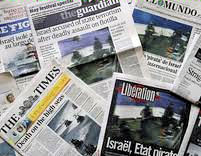Steps towards Reconciliation
 |
Traumatized Communities
The two sides in the Israeli-Palestinian conflict have been described as 'traumatized communities', apparently incapable of responding rationally to stress. Each has its own narrative. Each has launched attacks in circumstances which have predictably damaged their standing. Peacemakers should bear this neurotic condition in mind when judging whom and what to boycott. |
Reciprocal Unilateralism
John Lampen, in Pendle Hill Pamphlet 412 Answering the Violence cites a peacemaking process suggested by Charles Osgood: Graduated Reciprocation in Tension-Reduction ("GRIT").
Osgood suggested one side should make a series of clear and significant, but not necessarily irreversible, conciliatory gestures, publicly declared and implemented step-by-step, and openly hoping that the other side would respond likewise. In the event of a response, the first side will make further small advances, steadily building trust and easing tension. Transparency and predictability are built into the process, appealing to the common interests of both participants. A sympathetic independent moderator would play a key role.
Would this approach appeal more to a Reconciler than to a Prophet?
Consider a sequence of possible initiatives, and possible types of boycott.
See also the Oslo Accords, the Geneva Initiative, the Arab Peace Initiative, the Road Map and Civil Society peace movements.
